
In the summer of 1969, a floating oil slick on the Cuyahoga River, which cuts straight through the city of Cleveland, caught on fire. The burn wasn’t large and wasn’t deadly or even extremely costly. It was also bound to happen: Nearby manufacturing industries had been polluting the river to the point where dead rats regularly floated in its waters. But this trivial fire did something far more significant: It became a status symbol for the state of America’s water — and triggered a massive outcry that led the U.S. to clean up its waterways.
“The Cuyahoga River literally was on fire because of what was in the water,” Maria Lehman, Vice-Chair of the President’s National Infrastructure Advisory Council and President-elect of the American Society of Civil Engineers, tells Inverse. Lehman is also the director of U.S. Infrastructure for GHD, an engineering and consulting firm.
The result: the formation of the Environmental Protection Agency (EPA), which led to the passage of critical environmental legislation like the Clean Air Act in 1970 and the Clean Water Act in 1972. Millions of Americans can now safely turn on the tap every day. And that’s all thanks to the Clean Water Act, which turned 50 years old today.
But on its 50th anniversary, the legacy of the landmark legislation is under threat in many ways, ranging from a Supreme Court decision that may limit its scope to clean water issues that persist in communities of color and climate change. A half-century later, it’s worth looking at how the Clean Water Act ensured countless Americans can drink and swim in clean water — and how far we still have to go to protect our nation’s waterways.
“The Clean Water Act has had a very positive impact on many waterways. I think the problem is that we still have a long way to go,” Mark Squillace, a law professor at the University of Colorado at Boulder who specializes in natural resource law, tells Inverse.
What the Clean Water Act did

Before the Clean Water Act, regulations of America’s waterways were few and far between. The Rivers and Harbors Act of 1899 made it legal for the U.S. Army Corps of Engineers to regulate the discharge of pollutants into waterways, but in effect, most water regulation was left up to the states to decide.
“Frankly, they weren't doing a very good job in most places. And that was what led to the need for the Clean Water Act,” Squillace says.
The Federal Water Pollution Control Act of 1948 was the first U.S. law to deal with water pollution directly. In 1972, due to the growing concern over the environment, the law was amended and became the Clean Water Act. The goal was to "restore and maintain the chemical, physical, and biological integrity of the Nation's waters.” The law provided federal jurisdiction over the regulation of pollutants in America’s waterways and established the beginning of federal water quality standards.
The Clean Water Act has had a profound impact on Americans’ ability to consume water and fish, and swim in rivers, lakes, and streams. The legislation forced our country to protect our water from pollutants and get ahead of future threats to clean water, which was reinforced through subsequent legislation like the Safe Drinking Water Act of 1974 and the Water Quality Act of 1987.
“There are thousands of locations that you can now swim in, that you can fish in. Prior to this [law], you couldn't because the water wasn't clean enough,” Lehman says.
One of the key outcomes of the Clean Water Act was the establishment of Total Maximum Daily Loads (TMDL), which put strict limits on the amount of a pollutant that can enter a body of water. States typically submit TMDLs to the EPA for approval, which allows the state to develop a plan to reduce the number of pollutants and restore the water quality. Common pollutants regulated under TMDLs include mercury, nutrients like phosphorus and nitrogen, bacteria, sediment, and heavy metals like lead and copper. Accordingly, states set up monitoring programs to track pollutant levels over time.

The legislation also requires any activities that could pollute a body of water to be approved through a permit — a process typically overseen by the U.S. Army Corps of Engineers. The Clean Water Act also provided grants totaling roughly $650 billion for municipal wastewater treatment programs, directly improving water quality.
In 1998, the EPA assessed 23 percent of the nation’s 3.6 million miles of rivers and streams. The results were promising, finding that 55 percent of the waters were “good” quality, 35 percent were “impaired,” and the rest were “good but threatened.”
Recent research shows the Clean Water Act’s benefits. A 2021 study in the journal Ambio found significant declines in bacteria, lead, and sulfur dioxide levels in the lower Mississippi River since the Clean Water Act, leading to improved oxygen and pH levels in the water. Research from the University of Southern California published in 2012 in the journal Environmental Science and Technology found similar results, including a “100-fold decrease in lead and a 400-fold decrease in copper and cadmium” in coastal waters near Los Angeles in the four decades since the Clean Water Act.
Another 2017 study analyzed the impact of the Clean Water Act on Illinois’ waterways after the city of Chicago poured billions of dollars into cleaning up sewage and stormwater runoff. Native fish populations like bluegill and catfish rebounded while invasive species, particularly carp, which can thrive in poor water conditions, declined.
The state of clean water now
While our waterways are far cleaner than before the act was passed, the situation is far from over, according to Squillace.
Each of the experts Inverse spoke to for this story says the gains of the Clean Water Act haven’t been fully realized, even though water pollution ranks as the top environmental concern for more than 50 percent of Americans, according to a 2021 Gallup poll.
“Rivers are getting cleaner but not hugely from the Clean Water Act [since] about 2000,” Lehman says.
A report published in March by the nonprofit Environmental Integrity Project offers a grim outlook. Of the rivers and streams assessed in the report, a whopping 50 percent — spanning 703,417 miles — were polluted to the point where they could be categorized as “impaired.”
Another research article published in 2018 by scientists at the University of California, Berkeley, and Iowa State’s Center for Agricultural Research and Development assesses the benefits of the more than $1 trillion the U.S. has invested in cleaning up our nation’s waterways since the Clean Water Act.
The research finds that “water pollution concentrations have fallen substantially,” and the share of waters safe for fishing has grown 12 percent between 1972 and 2001. It's a good metric, but not on par with the lofty goals of the Clean Water Act to make all of America’s waterways “fishable” and “swimmable” by the mid-1980s. It’s a goal that we have still not yet achieved decades later.
To understand why we haven’t made good on the promises of the Clean Water Act, you have to understand the limitations of the law as well as systemic forces that impede clean water access.
Limited ability to regulate certain pollutants
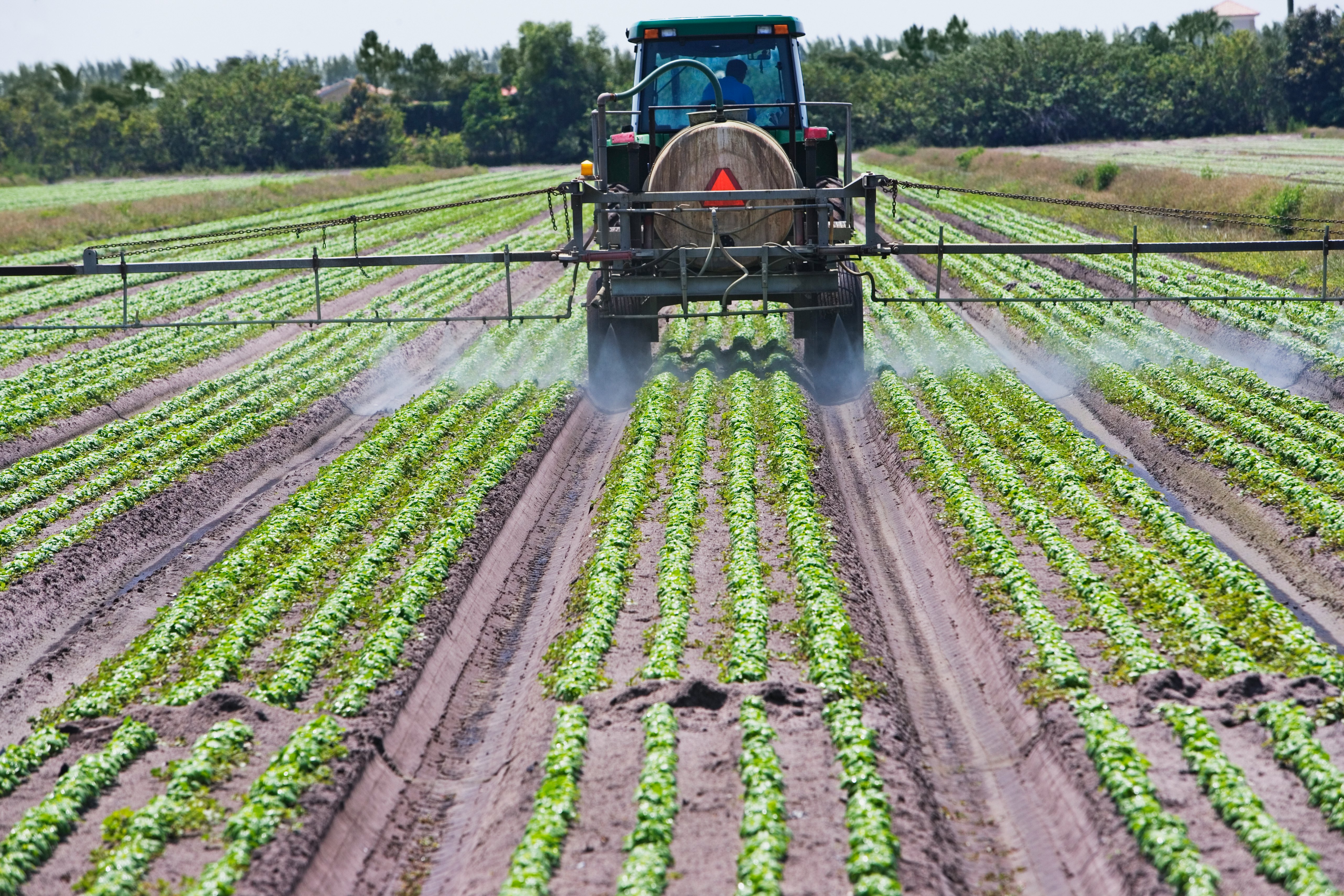
There are two main categories of water pollutants — and the Clean Water Act is only good at regulating one of these contaminants.
The first category is what scientists call “point source” pollution. It’s when pollution comes from an easily identifiable “point,” such as a sewage treatment facility or a chemical plant.
Todd Royer, aquatic ecologist, and director of the Royer Lab at Indiana University tells Inverse that the Clean Water Act did “a remarkable job” addressing point source pollution. Royer authored an opinion piece in Science arguing for the need to amend the Clean Water Act.
But the law cannot effectively control contaminants from nonpoint sources — pollutants that can come from multiple sources, such as oil from cities, sediment due to erosion, or fertilizers from farms. Nonpoint source pollution typically occurs due to rain or stormwater runoff carrying pollutants into nearby rivers and lakes.
“States report that nonpoint source pollution is the leading remaining cause of water quality problems,” according to the EPA.
Royer says the Clean Water Act has “failed to address” non-point source inputs of nutrients and other pollutants since it lacks authority to regulate these contaminants, including pollution from agricultural drainage waters. The Clean Water Act also does not regulate pharmaceutical compounds and personal care products, whose pollutants can have “ecological effects on fish and other aquatic life,” according to Royer.
“Fertilizers end up in our waterways and cause lots of pollution. It's very hard to regulate those things, and there's a lot of political resistance to regulating nonpoint source pollution,” Squillace adds.
Environmental injustice in the fight for clean water
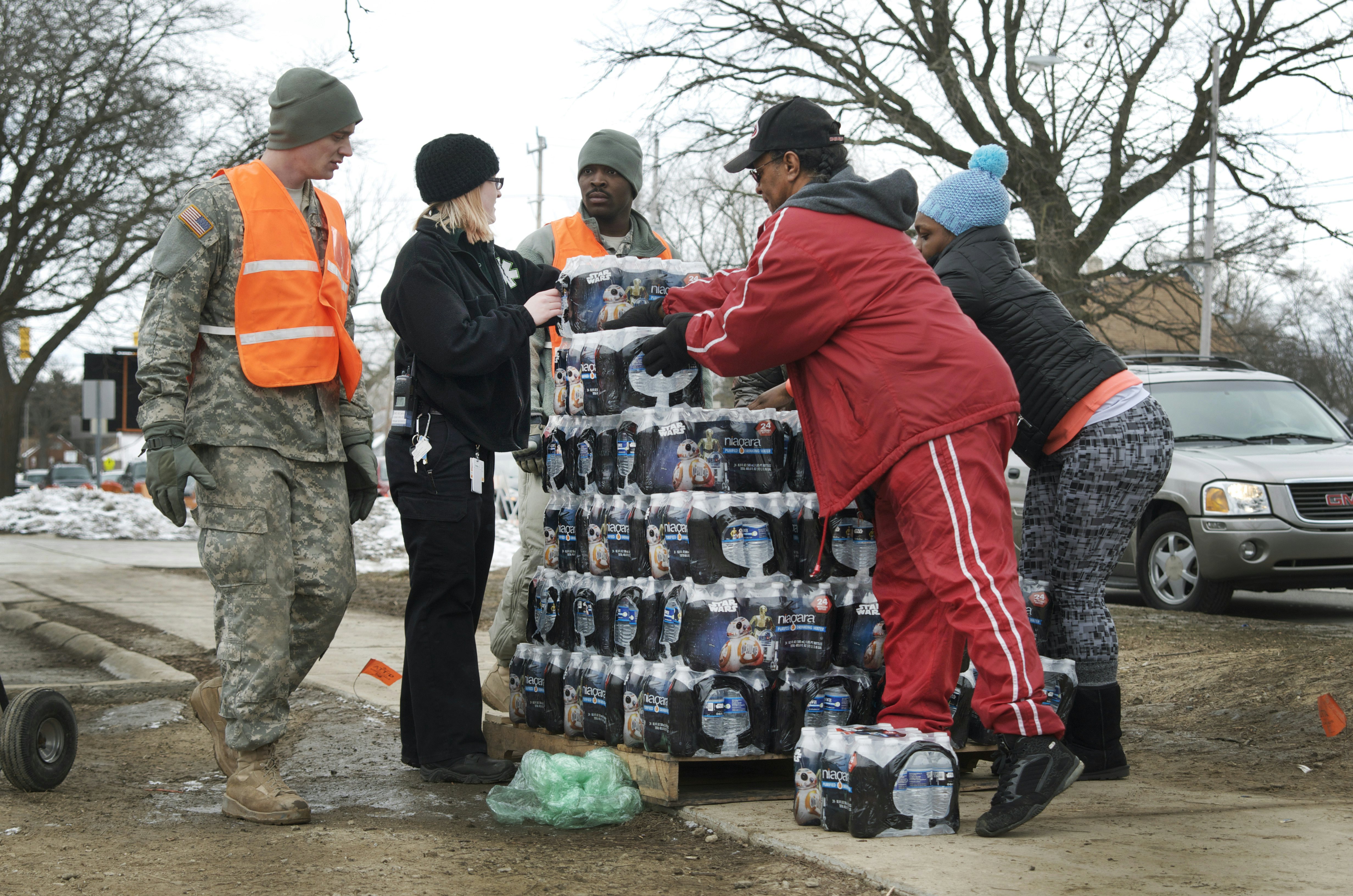
Lack of access to clean water often falls along racial and socioeconomic lines. Two majority-Black cities — Baltimore, Maryland and Jackson, Mississippi — have faced significant clean water issues in recent months due, in part, to decades of disinvestment in their urban water infrastructure. A 2021 study also found that regulators were slower to enforce violations of the Clean Water Act in poor and Hispanic communities.
“Race and income disparities in enforcement of the [Clean Water Act] represent examples of environmental injustice,” David Konisky, a co-author of the study and co-director of the Energy Justice Lab at Indiana University, Bloomington, tells Inverse.
The majority-Black city of Flint, Michigan, became a flash point for clean water issues in 2015 when the city decided to switch its water source, leading to excessively high lead levels in the water. Lead has been linked to behavioral problems in children and increased risk of heart and kidney disease in adults. Contamination in Flint’s water caused the deaths of 12 people due to Legionnaires’ disease.
Unsafe drinking water can also take a mental health toll. A 2022 study in JAMA found that one-fifth of the nearly 2000 adults surveyed who were living in Flint during the water crisis fit psychiatric criteria for depression and one-quarter for posttraumatic stress disorder — rates far higher than elsewhere in the country. Only 34 percent were offered water-crisis–related mental health services.
“Our study indicates that the Flint Water crisis was a potentially traumatic event capable of precipitating long-term mental health problems,” Aaron Reuben, lead author on the study and postdoctoral scholar at Duke University, tells Inverse.
But the lack of access to clean water occurs far and beyond Flint, affecting nearly every pocket of the U.S, from remote communities in the Navajo Nation to rural residents in California’s Central Valley.
“Paying twice” for water in California’s Central Valley
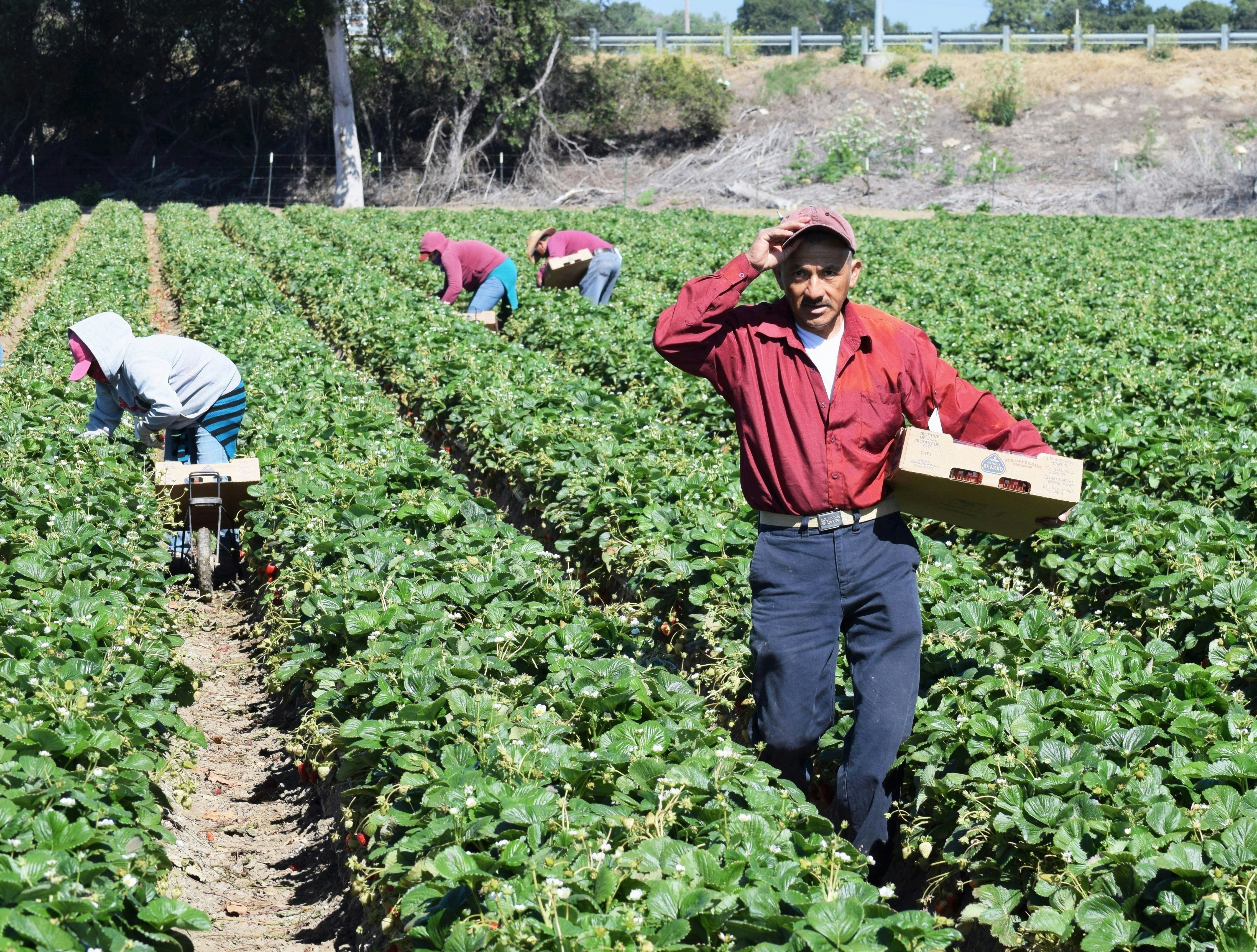
“A lot of the communities that are facing issues with lack of safe and lack of affordable water in California are small rural farmworker communities, a lot of which are predominantly Latino, and also Spanish speaking communities,” Kelsey Hinton, Communications Director for Community Water Center, an organization focusing on community-driven solutions to water issues in California.
Language issues can be a barrier to advocating for clean water, but the area’s water crisis ties back to the historical disenfranchisement of communities in places like Tulare County in the Central Valley. Racist housing policies known as “redlining” pushed communities of color into unincorporated towns and cities that didn’t get the same infrastructure planning for services most people take for granted, like sewage and water treatment.
Today, many residents rely on private or community wells, which pull up groundwater that is likely untreated. As a result, these communities face levels of arsenic and nitrates in their water exceeding safe state and federal limits. Residents with these kinds of contaminants in their wells cannot use the water for drinking, though it is safe for showering and washing dishes. Recent agricultural runoff from dairies and farms causes pollution, but Hinton says the contaminants may also be lingering in these wells for decades.
“What's also really tricky is it's not just the one-time contamination necessarily that's coming from one source — it's really building on each other,” Hinton says.
For some pollutants, like nitrates, boiling does not remove them from drinking water, and these communities must turn to bottled water for their drinking water needs. Since individuals need to pay for both their water bills and bottled water, Hinton says they’re effectively “paying twice for water, despite the fact that California passed a bill in 2012 recognizing the human right to water.
“It's fair to say that over a million Californians are dealing with unsafe water,” Hinton says.
Environmental injustice in the Navajo Nation
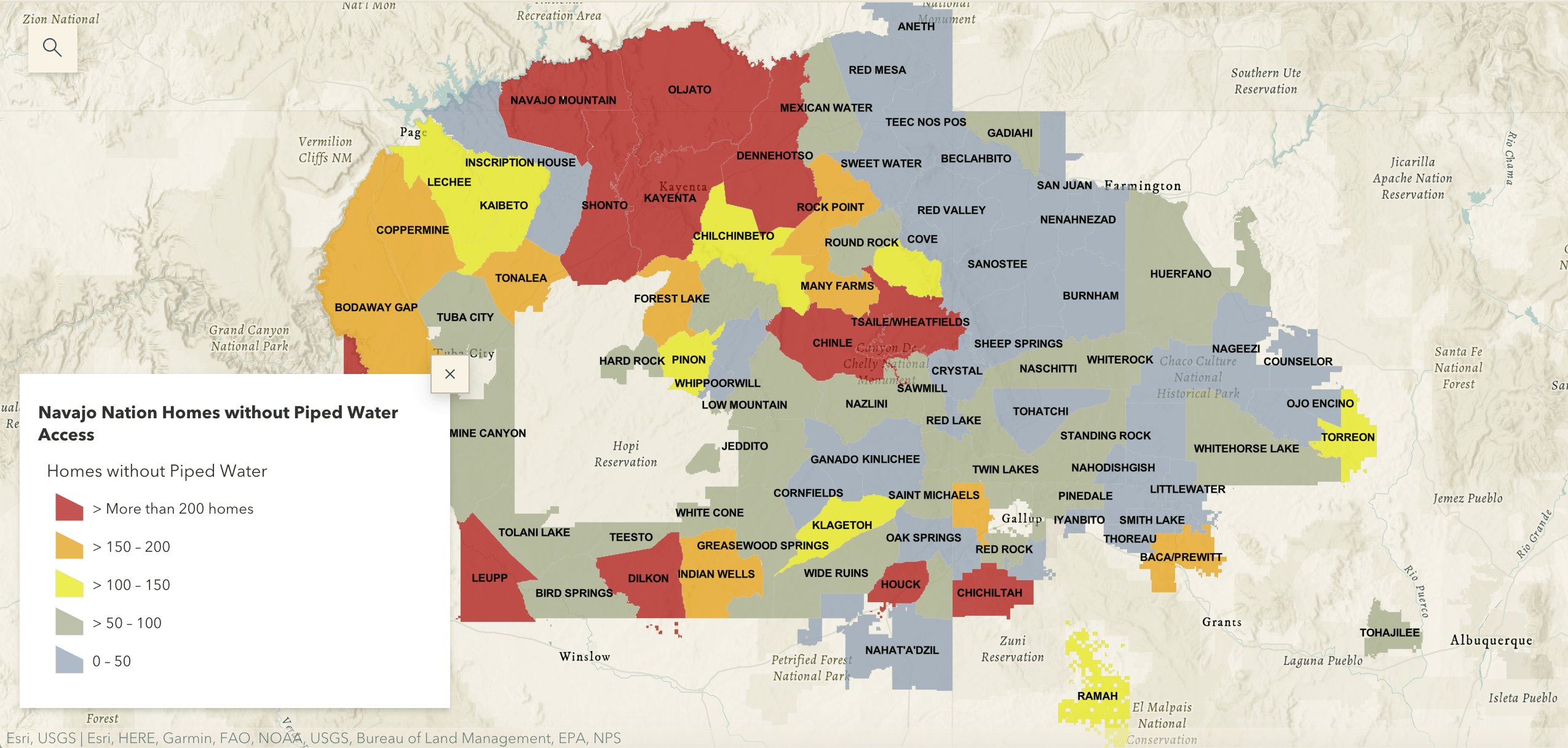
According to a joint report by nonprofit DigDeep and the U.S. Water Alliance, race is the “strongest predictor” of clean water access. More than two million Americans are without access to safe drinking water and sanitation in their homes, though the number of Americans whose water systems had drinking water violations was much higher — around 44 million people.
But the issue is even more pronounced for Native American communities. The report states Native American households are 19 times more likely than white households to lack indoor plumbing. In the Navajo Nation, roughly 30 percent of community members lack access to running water, according to Emma Robbins, Executive Director of DigDeep’s Navajo Water Project. The Navajo Nation spans more than 27,000 miles across Arizona, Utah, and New Mexico.
Because of its large size, it can be costly to get clean water to people in remote parts of reservations or for people to drive to get bottled water. Dust laced with uranium from abandoned mines can harm the quality of groundwater drawn from community wells, though projects like Navajo Safe Water are using data to provide community members with geolocations of safe water access points. A 2016 Congressional report states there are more than 500 abandoned mines within the Navajo Nation.

“Some people get water from livestock wells, which are in more remote areas and definitely are not rated for human consumption, but it's the closest watering point,” Robbins says.
Although the Navajo Nation has received funding from the government through the CARES Act and American Rescue Plan — measures passed to provide economic relief during the Covid-19 pandemic — there is still a need for further funding. Robbins says it’s important to involve local community members of the Navajo Nation in federal water infrastructure planning from the beginning to effectively facilitate projects like road improvement, which may be necessary to get water-related equipment to sites.
“Some areas are so rural, that traditional systems like pipe water might not work because you just can't get piped water out there,” Robbins says.
Advocates believe a new Office of Environmental Justice in the EPA — announced in September by the Biden administration — could help disadvantaged communities facing clean water issues by providing technical support and federal funding to update aging water infrastructure. They can partner with federal agencies like FEMA to boost communities’ water infrastructure resiliency to climate change.
“The EPA can bring a lot of funding and technical knowledge to bear for underserved environmental justice communities,” Andy Kricun, managing director of the water nonprofit Moonshot Missions, tells Inverse. Kricun also serves on the EPA’s National Environmental Justice Advisory Council.
The future of clean water in the U.S.
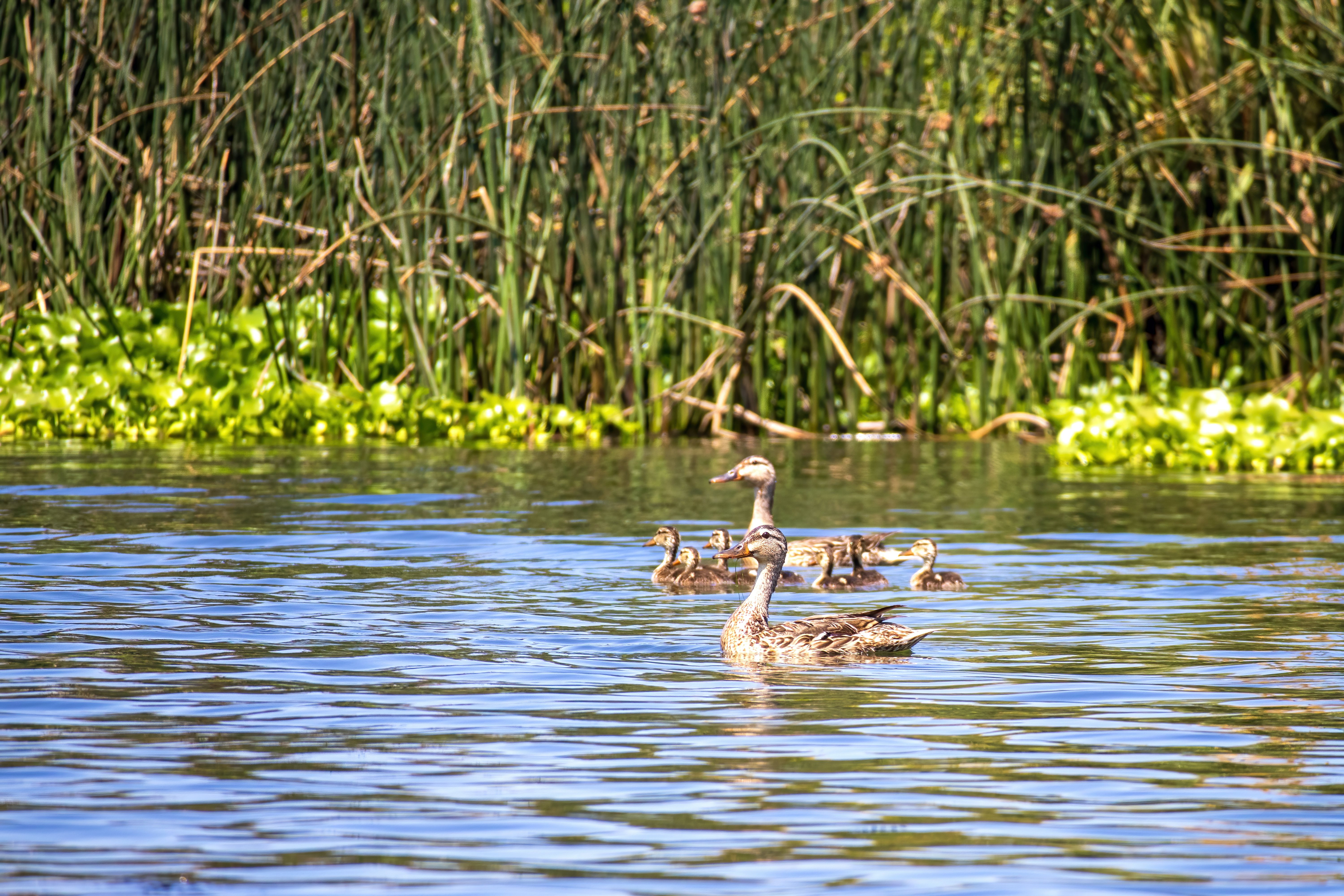
The Clean Water Act may soon face its biggest challenge yet in the Supreme Court case of Sackett v. Environmental Protection Agency. The case concerns a couple — the Sacketts — who sought to fill a wetland on their property for development, despite the EPA saying their construction violates the Clean Water Act. The Sackett case poses a clear test to the Clean Water Act’s ability to regulate “waters of the United States” by asking whether wetlands fall under the law’s purview. The Sackett’s wetlands are located near an Idaho lake, so the EPA asserts they have the right to regulate it.
The Clean Water Act gave the EPA jurisdiction to regulate the release of pollutants into “navigable waterways” in the U.S. through a few mechanisms. But what, exactly, constitutes a “navigable” body of water has been a subject of contentious debate.
Squillace says that Supreme Court justices conservatively interpret the phrase to indicate only bodies of water that are clearly navigable, thus making it harder for the EPA to regulate smaller bodies of water unconnected to rivers or lakes — like wetlands in the Sackett v. EPA case.
“The result is that we are constantly fighting over which waters are covered by the Clean Water Act,” Squillace says.
The Supreme Court’s forthcoming decision on the case could potentially restrict the EPA’s ability to regulate pollutants in wetlands for decades to come.
Modern threats to clean water

Other modern threats have emerged since the Clean Water Act that hinder our ability to provide safe water to all Americans. New evidence is emerging that companies are leaking “forever chemicals” known as PFAS into the air and water, potentially contaminating the drinking water of some 200 million Americans.
Research from a 2022 study revealed that runoff from de-icing salts can infiltrate our waterways. According to lead author William Hintz, assistant professor in the University of Toledo’s Department of Environmental Sciences, excessive salinization — salt levels in water — can harm freshwater ecosystems by reducing the zooplankton available for fish to consume.
Lehman also says that climate change will worsen clean water access issues if we’re not prepared. As global warming increases, toxic blooms of algae can grow in freshwater bodies — like the infamous “red tide” in the Gulf of Mexico — preventing fish and other life from surviving in these contaminated waters.
Climate change increases the risk of extreme weather events like flooding, which can cause sewers to overflow and lead to proliferation of bacteria like E. coli in the water. Additionally, climate change makes groundwater loss in places like California’s Central Valley more likely. A 2021 study found that up to 20 percent of groundwater wells are at risk of running dry, threatening the drinking water of people in this community.
“Groundwater is a vital water supply during droughts. Climate change is having direct and indirect impacts on groundwater supplies,” Scott Jasechko, lead author on the study and assistant professor of water resources at the University of California, Santa Barbara, tells Inverse.
“There's a lot of old 100-year-old pipes out there”
“We don't have the Cuyahoga River on fire like we did in the ‘70s because of all the pollutants that were in the river coming into Lake Erie, but there's other new issues,” Lehman adds.
America’s water infrastructure is also badly outdated and in need of repair. According to Lehman, 6 billion gallons a day of treated water are lost due to broken lines.
“There's a lot of old 100-year-old pipes out there,” Lehman says. “If we do not improve the water quality, whether it's drinking water, whether it's stormwater or whether it's wastewater, the next 30 years, we are going to see just shy of a $4 trillion hit to our gross domestic product.”
But a new influx of cash from the Infrastructure bill could help get our water infrastructure back on track for the 21st century. The bill provides more than $50 billion to the EPA to improve drinking water, wastewater, and stormwater infrastructure — the American government's largest investment to date in improving water.
Scientists also say that policymakers need to be doing a better job of proactively anticipating threats to water instead of simply reacting to them. So as new scientific information becomes available regarding microplastics, PFAS, salt, and other pollutants, Congress and the EPA will need to craft environmental policies to protect our waterways — and honor the legacy of the Clean Water Act.
“We can do that now. We don't have to wait another decade to do it,” Hintz says.







